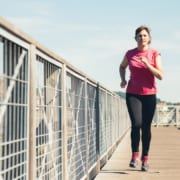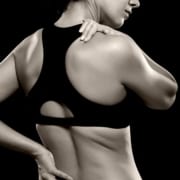Healthy Aging Can Be A Balancing Act
Have you ever been in a situation where your mind said, “You can do it! You can do it!,” then your body said, “No, STOP – you can’t!”? In the case of a fall, it’s possible that the second message came a little too late.
Most of us know exactly what it feels like to experience a fall. It can be a very scary moment when you know you have lost your balance and a fall is imminent. Oftentimes, there is nothing you can do about it but hope for a soft landing and no fractures.
In the United States, nearly one-fourth of adults over 65 fall annually, causing 95% of the hip fractures seen each year. Among older adults, falling has become the leading cause of fatal and non-fatal injuries.
So – what is this thing called BALANCE, and why does it get worse with aging?
Balance is a state of equilibrium where there is an even distribution of weight enabling someone to remain upright and steady. Having good balance means having control over your body’s position, whether you are moving or remaining still. Ahhh… if only that would stay with us as we age. The unfortunate reality is that our risk and frequency of falling increases the older we get because our natural ability to maintain balance is compromised by a number of factors, including:
- Musculoskeletal factors: This includes muscle weakness (most notably in the core, but could be in the extremities as well), joint and soft tissue stiffness, and poor posture which changes our center of gravity.
- Neurological factors: Reflex sensitivity and reaction times are reduced as we age and there is a diminished sense of spatial awareness.
- Age-related Vestibular disorders: These include dizziness, vertigo, lightheadedness, blurry vision, BPPV (Benign Paroxysmal Positional Vertigo), and inner ear disorders.
- Age-related Visual disorders: Visual acuity, depth perception, peripheral vision, and contrast sensitivity (being able to see the difference in patterns and shading, i.e. hotel carpeting on steps without a defining border).
- Ankle instability*: The older we get, the stiffer our ankles tend to become. Another common issue is decreased mobility in the mid-foot and toe regions, especially the great toe (big toe) which is used to push off into a walk.
- Hip stability*: Corrective motion in gait occurs primarily around the hips, which need to be open and mobile but are less-so as we age.
- Pain: Pain anywhere in your body, will affect how you hold yourself thereby altering your sense of orientation in space and your center of gravity.
*With aging comes osteoarthritis which affects these weight-bearing joints.
4 steps you can take to decrease your risk of falling:
- Exercise is VERY important and needs to be targeted to potential problem areas in the body. A good exercise program will include gentle movements that focus on improving core strength, along with weight-bearing exercises to increase bone density.
- If you are taking medication (which is the reality for most of us as we age), there is a possibility that your medications may be adding to your visual or vestibular difficulties. Consult your physician to rule out this possibility.
- Don’t ignore your pain. Whether your pain is acute or chronic, make sure to address it immediately with your physician or a pain specialist.
- Be kind to your feet! Shoes need to be supportive so we can move more efficiently and experience greater ease in having to stand still for a long period of time.
- Remember to do breathing exercises. More oxygen to your muscles will make them more efficient in keeping you stable.
If you think you could be at risk for a fall, make sure to have a talk with your physician or physical therapist to relay your concerns as soon as possible. You can always do something to feel and move better!!
We are here for you, and we want to help.
Our goal is to return you to optimal health as soon as possible. To schedule an appointment please call: 703-532-4892 x2









Leave a Reply
Want to join the discussion?Feel free to contribute!